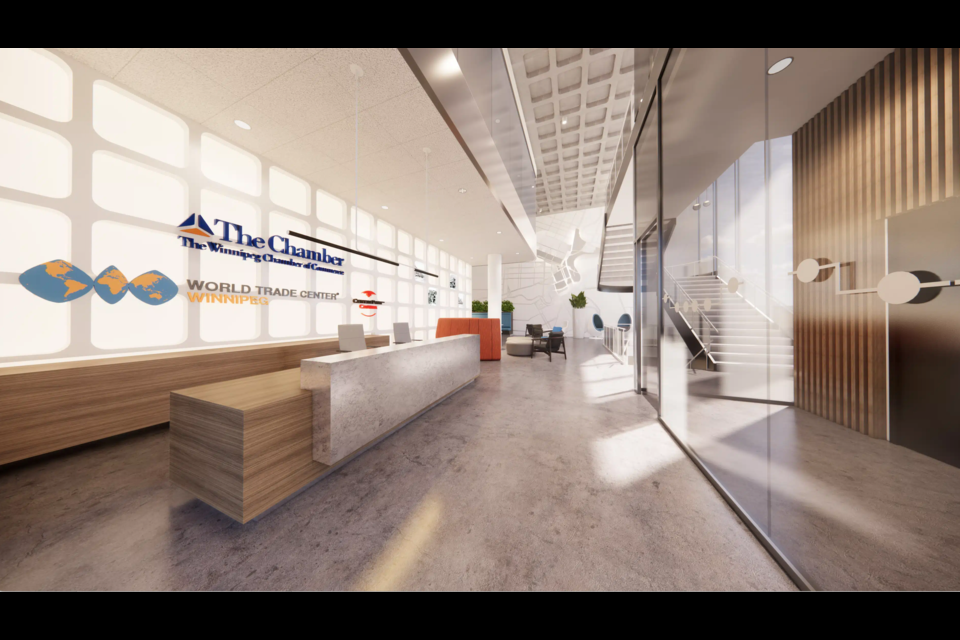The dawn of 2023 will bring a promising new start for Prairie real estate markets, with strong economic fundamentals driving industrial growth and renewed investment lifting the hopes of office landlords.
The resource sectors have delivered a windfall for provincial governments, with Saskatchewan forecasting a $1.1 billion surplus and higher-than-expected hydro revenues paring Manitoba’s budget deficit.
But the end of the current office construction cycle has left many Western Canadian cities with stubbornly high office vacancies. Companies have gravitated to newer, high-quality space, leaving older, lower-class space wanting tenants. Some of the older space has languished for years, and the new builds and the post-pandemic adjustment to hybrid work arrangements have made it even harder to lease.
Regina has the highest office vacancy rate in the country outside Alberta at 17.5 per cent – nearly 950,000 square feet – and trending upwards at the end of third quarter.
“Solving the downtown vacancy in Regina, that’s going to be a protracted solution,” said Richard Jankowski, managing director for Colliers International in Saskatchewan.
While landlords initially stuck by their rates and offered greater inducements, the fourth quarter saw them relent and cut rates by as much as $3 a square foot to attract interest.
There are positive signs into 2023.
Shared-services provider 3sHealth and Saskatchewan Cancer are seeking 48,000 square feet in Regina, which will put a significant dent in vacancies. In Saskatoon, where office vacancies are 14.5 percent, international mining giant BHP is relocating its headquarters to 50,000 square feet in a converted police station that had sat vacant for years. IWG plc opened its second Regus co-working location in the province, taking 10,000 square feet in the Scotiabank building at 111 Second Avenue.
Winnipeg office
The renewal of office space in Winnipeg, where vacancies averaged 12.7 per cent but totaled 2.1 million square feet at the end of the third quarter, has also received a boost with major investments in space at Portage and Main. The new year will see the Winnipeg Chamber of Commerce, World Trade Centre Winnipeg and CentrePort Canada Inc. collocate at space in the former Scotiabank building at 200 Portage Avenue.
“The absorption is back to positive, and we definitely forecast that continuing into ’23,” said Dan Chubey, managing director for Colliers in Winnipeg. “There is now increased leasing activity downtown, especially versus the pause of ’20 and ’21, and we’re also beginning to see landlords invest pretty significantly into lobby upgrades and building renovations in general.”
A $5 million renovation of 201 Portage that was nearing completion this month will include a satellite location of popular local steakhouse 529 Wellington, to be known as 529 Uptown. Geared to the downtown office population, it demonstrates the kind of retail tenants landlords are looking for as amenities in their buildings.
Industrial outlook
On the industrial side, Manitoba and Saskatchewan are effectively out of space. Demand for space has trumped high construction costs to keep the sector moving forward and builders can’t keep up.
“I’m hoping we don’t get missed in this economic cycle because we don’t develop enough industrial space,” Jankowski said. “The developers aren’t moving quick enough. In some cases, like Saskatoon, we don’t have a large supply or a lot of options on serviced industrial land, either.”
It’s a similar story in Winnipeg, but recent commitments promise to drive change in 2023.
The lack of serviced land within Winnipeg has typically driven industrial users to the Rural Municipality of Rosser north of the city, which currently has 600,000 square feet under development. While the massive CentrePort Canada industrial area surrounding James A. Richardson International Airport is the largest source of developable industrial land, servicing to date has been in Rosser.
“That whole node is about 20,000 acres and in total to date there’s been development on about 10 per cent of that, so there’s a lot of room to grow,” Chubey said. “We’ve got tonnes of opportunity. The only barrier has been more shovel-ready, serviced land.”
But a provincial commitment of $40 million in late October to service the portion within Winnipeg changes the game. Proponents hope Ottawa will ante $20 million in matching funds, as builders are seeking opportunities and tenants are scouting digs.
Hopewell Development Corp.’s 294,150-square-foot West Creek Industrial Park is attracting “very, very significant interest” ahead of its completion next spring, one of a number of speculative developments attracting interest from national players for regional distribution hubs.
“It doesn’t matter the scale, [developers] are very confident in the market so they’re putting shovels in the ground and producing it on spec,” Chubey said.



